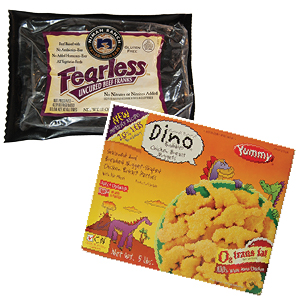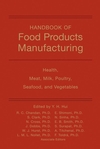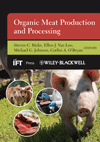Of the 1,000 American adults surveyed, 66% identified healthfulness as a leading factor impacting purchase. This is a significant increase from the 2010 survey, when 58% of respondents said healthfulness impacted their purchase decisions.

|
The survey data also indicate that 68% of Americans are actively using the Nutrition Facts panel for product information and almost half (49%) use the ingredient statement. Further, the majority of Americans believe that fortified foods and foods with added benefits have at least some impact on overall health. Yet, very few center-of-plate proteins are actively marketed for their healthfulness, other than the handful of lean meats that flag fat content, and now some products are highlighting reductions in sodium.
There are many opportunities to improve formulations to better appeal to the consumer seeking healthful products. For example, Maxi Canada Inc., Quebec, markets a variety of frozen, fully cooked breaded chicken products, including nuggets, patties and dinosaur shapes. The company touts the omega-3 fatty acid content of its products on package labels, and explains that the omega-3s come from heart-healthy canola oil and flaxmeal in the breading.
These ingredients contain the omega-3 alphalinolenic acid (ALA), which is converted by the body to docosahexaenoic acid (DHA) and eicosapentaenoic acid (EPA). Both DHA and EPA are well recognized as contributing to many health benefits during all stages of life, in particular in children up to age three, where DHA is essential for the development of the brain and eyes. After the age of three, both DHA and EPA are important for cognitive function, and research suggests that these fatty acids may improve behavior and learning disorders. Additionally, research indicates that EPA and DHA may reduce inflammatory conditions such as asthma, childhood depression and reduce the risk of type 1 diabetes.
Most kids like hot dogs as much as they like chicken nuggets, so in efforts to appeal to the gatekeeper seeking out preservative-free wieners, a number of manufacturers are now offering uncured varieties. What they are really offering are hot dogs (and sometimes ham and other sausages) free of chemical curing agents such as sodium nitrate and sodium nitrite. Instead, they are often curing the comminuted and encased meat with the nitrates found in celery or spinach, two of the richest all-natural sources of nitrates. Celery juice, as a liquid or dried into a powder, has been shown to be effective in controlling bacterial growth, one of the primary purposes of curing sausages and other meats.
The USDA defines an uncured product as one that has been preserved without the use of chemical agents, such as sodium nitrite or sodium nitrate, which is why such products can be labeled “uncured,” “no nitrites added” or “no nitrates added.”
Natural vinegar, lactic acid and even lemon powder have also been shown to function as natural preservatives in processed meats. For example, at the American Meat Institute (AMI) Expo in Chicago in April, one ingredient supplier introduced a concentrated dry vinegar product that can be added to seasoning blends for application in fresh and cured meat products. It is declared on ingredient legends as “dried vinegar,” and at levels as low as 0.8% has been shown to inhibit the growth of Listeria.
Also at AMI, a number of fiber ingredient suppliers showed how fiber can be used to improve ingredient declarations on brined and marinated proteins, as well as burger-style products based on beef, poultry or vegetables.
Certain fiber food ingredients bind moisture, which will increase yield and subsequently reduce fat and calorie content, as fiber-bound water is virtually fat- and calorie-free. This natural system can also replace chemical-sounding ingredients, and depending upon the application, contribute to the fiber content of the center-of-plate protein. For the health-conscious label reader, the addition of fiber is typically welcomed.
And as mentioned, most protein manufacturers are trying to reduce sodium contents. One common approach is to substitute potassium phosphates for sodium phosphates in brines and marinades, as they work synergistically with added salt. Because there is a slight bitterness associated with potassium, flavorings and seasonings are often added to mask such off flavors. Another option is to introduce the mineral magnesium along with potassium.
Magnesium has been shown to decrease bitterness and at the same time enhance flavor and provide similar functionalities as sodium.
With more consumers reading labels, choosing better-for-you ingredients is becoming increasingly important for all formulators.








